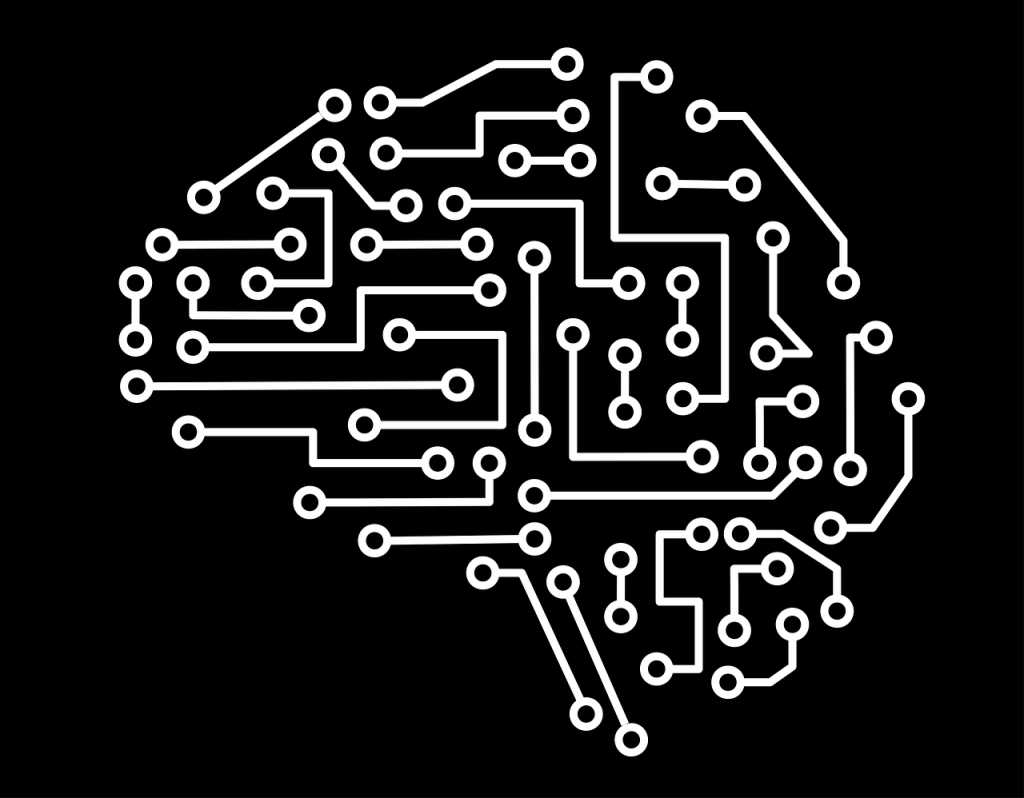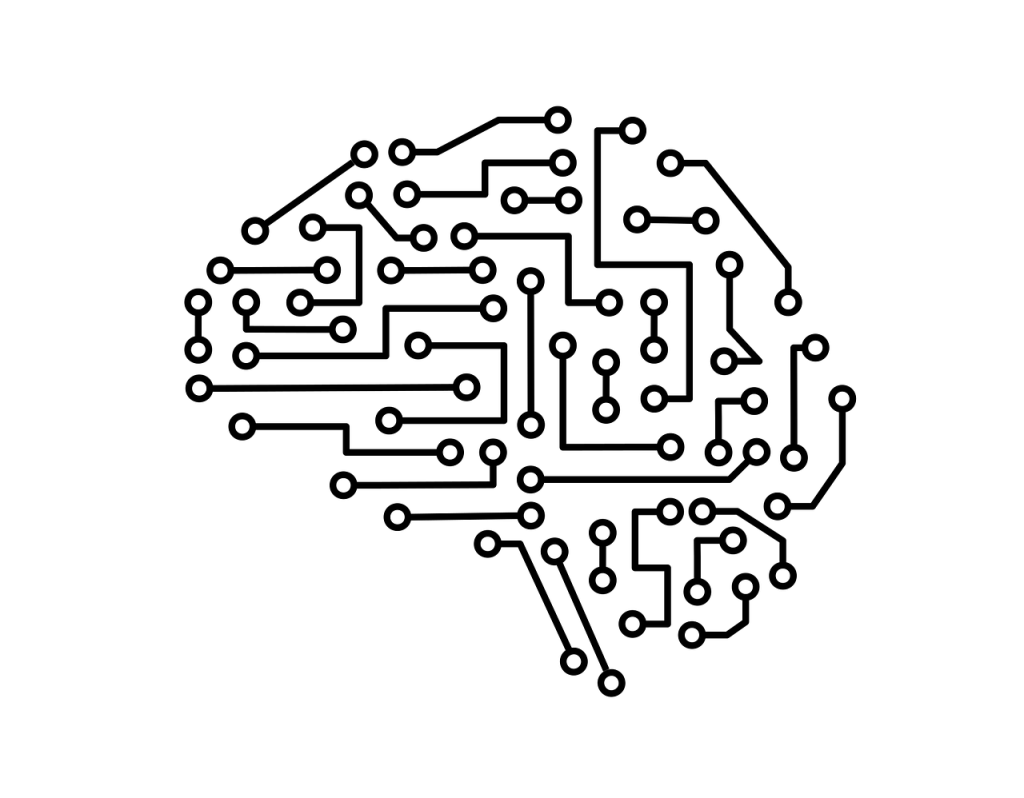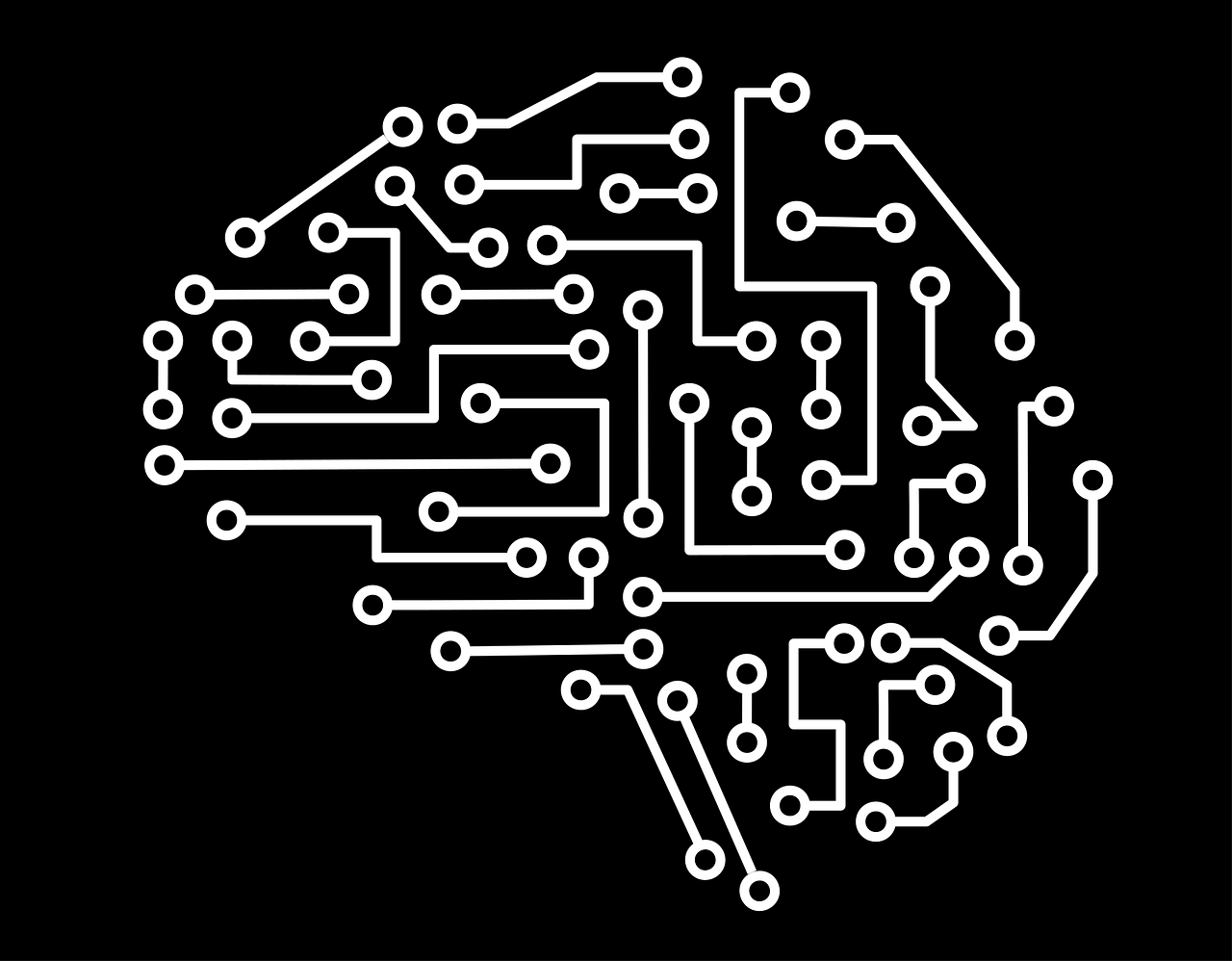If you’ve ever wondered how you can dive into the fascinating world of AI, look no further. This article is here to guide you on your journey to learning AI. With the increasing popularity and importance of artificial intelligence in various industries, it’s no surprise that many are eager to understand its inner workings. Whether you’re a complete beginner or have a basic understanding, we’ll explore the different avenues you can take to acquire the knowledge and skills needed to master AI. So, let’s get started on this exciting adventure together and uncover the wonders of AI.
Getting Started with AI
Understanding the Basics of AI
To begin your journey in AI, it’s important to understand the basics. AI, or Artificial Intelligence, refers to the development of computer systems that can perform tasks that would typically require human intelligence. This includes tasks such as problem-solving, decision-making, and learning from data. By understanding the foundations of AI, you can gain insights into how these systems work and the principles behind them.
Exploring Different AI Applications
AI has a wide range of applications across various industries and fields. From healthcare and finance to transportation and entertainment, AI is changing the way we live and work. By exploring different AI applications, you can gain a better understanding of how AI is being used to solve real-world problems and make meaningful advancements. This knowledge can help you identify areas where AI can be applied and contribute to the development of innovative solutions.
Learning AI Terminology
As with any field, AI has its own set of terminology and concepts that you need to familiarize yourself with. From neural networks and algorithms to deep learning and natural language processing, understanding AI terminology is key to effectively communicating and collaborating with other professionals in the field. By learning AI terminology, you can navigate through AI discussions and literature with confidence and gain a deeper understanding of AI concepts.
Developing a Strong Foundation in Mathematics and Statistics
Studying Linear Algebra
Linear algebra is a fundamental branch of mathematics that plays a crucial role in AI. It deals with vectors, matrices, and linear transformations, which are essential building blocks for many AI algorithms. By studying linear algebra, you can develop a solid foundation in mathematical concepts used in AI, such as matrix operations, eigenvalues, and eigenvectors.
Mastering Probability and Statistics
Probability and statistics are vital in AI for data analysis, modeling, and decision-making. Probability theory allows us to quantify uncertainty and make informed decisions based on probabilistic reasoning. Statistics, on the other hand, helps us analyze and draw meaningful insights from data. By mastering probability and statistics, you can effectively analyze and interpret data in AI applications, and make informed decisions based on data-driven insights.
Gaining Proficiency in Calculus
Calculus, particularly differential and integral calculus, is essential for understanding optimization algorithms and modeling continuous phenomena in AI. Optimization algorithms help us find the best solution or parameters for AI models, and calculus provides the mathematical framework to formulate and solve these optimization problems. By gaining proficiency in calculus, you can understand the principles behind optimization algorithms and model complex AI systems.

Understanding Machine Learning
Learning Supervised Learning
Supervised learning is a popular machine learning technique where an algorithm learns from labeled data to make predictions or classifications. In supervised learning, the algorithm is trained on a dataset with input-output pairs, and it learns the relationship between the inputs and outputs. By learning supervised learning algorithms, you can understand how to build predictive models based on existing data and make accurate predictions on new, unseen data.
Exploring Unsupervised Learning
Unlike supervised learning, unsupervised learning deals with datasets that do not have labeled outputs. In unsupervised learning, the algorithm explores the data patterns and structures to uncover hidden insights and relationships. Unsupervised learning techniques, such as clustering and dimensionality reduction, are widely used in AI applications like customer segmentation and recommendation systems. By exploring unsupervised learning, you can gain valuable insights from unlabelled data and uncover hidden patterns.
Understanding Reinforcement Learning
Reinforcement learning is a branch of AI that focuses on learning through interactions with an environment. In reinforcement learning, an agent learns to make decisions and take actions to maximize a reward signal. This trial-and-error learning process enables the agent to learn optimal strategies for achieving its goals. Understanding reinforcement learning can help you design AI systems that can learn and adapt in dynamic environments, such as autonomous vehicles and game-playing agents.
Exploring Deep Learning
Understanding Neural Networks
Neural networks are at the heart of deep learning. They are computational models inspired by the structure and function of biological neural networks. Neural networks are composed of interconnected layers of artificial neurons that process and transform input data to produce desired outputs. Understanding neural networks is fundamental to grasping the principles behind deep learning and unlocking its potential in solving complex problems.
Studying Convolutional Neural Networks
Convolutional Neural Networks (CNNs) are a type of neural network specially designed for processing structured data, such as images and videos. CNNs utilize convolutional layers to extract features from input data and are highly effective in tasks like image recognition, object detection, and image synthesis. By studying CNNs, you can understand specialized neural network architectures and gain knowledge in computer vision applications.
Gaining Knowledge in Recurrent Neural Networks
Recurrent Neural Networks (RNNs) are another type of neural network designed to handle sequential data, such as natural language and time series data. Unlike feedforward neural networks, RNNs have feedback connections that enable them to retain information and learn from past inputs. RNNs are widely used in natural language processing, speech recognition, and machine translation. Gaining knowledge in RNNs allows you to model and analyze sequential data in AI applications.

Learning Programming Languages for AI
Python: The Go-to Language for AI
Python is the most popular programming language in the field of AI. It is known for its simplicity, readability, and vast ecosystem of libraries and frameworks specifically built for AI. Python’s versatility allows you to easily implement AI algorithms, manipulate data, and build powerful AI applications. By learning Python, you open up doors to a wide range of AI tools and resources that can accelerate your learning and development in the field.
R: Statistical Computing and Graphics
R is a programming language widely used in statistical computing and graphics. It provides a comprehensive set of tools for data analysis, visualization, and statistical modeling. R is particularly favored in academia and research for its robust statistical libraries and graphical capabilities. By learning R, you can enhance your statistical analysis skills and leverage R’s rich ecosystem for data analysis in AI projects.
MATLAB: Numerical Computing and Data Visualization
MATLAB is a proprietary programming language and environment renowned for its capabilities in numerical computing and data visualization. It offers a vast number of built-in functions and toolboxes for tasks like matrix manipulations, signal processing, and image processing. MATLAB’s interactive interface makes it easy to explore and visualize data, making it popular in academic and research settings. Learning MATLAB can augment your numerical computing skills and enhance your ability to analyze and visualize data in AI applications.
Acquiring Data Preparation and Visualization Skills
Exploring Data Cleaning Techniques
Data cleaning is an essential step in the AI workflow, as datasets often contain missing, inconsistent, or noisy data. By exploring data cleaning techniques, you can learn how to preprocess and transform raw data into a clean and usable format. This includes dealing with missing values, handling outliers, and addressing data inconsistencies. Skill in data cleaning ensures the quality and integrity of data used in AI models and analysis.
Learning Data Transformation and Feature Engineering
Data transformation and feature engineering involve creating new features or transforming existing features to improve the performance of AI models. This process requires a deep understanding of the data and domain knowledge. By learning data transformation and feature engineering techniques, you can extract more meaningful and informative features from raw data, leading to improved model performance and better insights.
Mastering Data Visualization
Data visualization is an essential skill in AI as it helps communicate insights and patterns in data effectively. By mastering data visualization techniques, you can create visual representations of data that are easy to understand and interpret. This skill enables you to present complex AI results and analysis in a visually appealing and intuitive manner, facilitating better decision-making and understanding of AI outputs.

Implementing Machine Learning Algorithms
Understanding Supervised Learning Algorithms
Supervised learning algorithms form the backbone of many AI applications. By understanding supervised learning algorithms, you can implement models such as linear regression, decision trees, support vector machines, and neural networks. Each algorithm has its advantages and is suitable for different types of data and tasks. Understanding the principles and nuances of these algorithms allows you to choose and implement the most appropriate model for your AI problem.
Exploring Unsupervised Learning Algorithms
Unsupervised learning algorithms enable us to discover patterns and structures in data without labeled outputs. By exploring unsupervised learning algorithms such as clustering, dimensionality reduction, and association rule mining, you can gain insights from unstructured or unlabelled data. These algorithms are particularly useful for tasks like customer segmentation, anomaly detection, and market basket analysis.
Applying Ensemble Learning Techniques
Ensemble learning is a powerful technique that combines multiple individual models to make more accurate predictions or classifications. By applying ensemble learning techniques, such as bagging, boosting, and stacking, you can leverage the strengths of different models and improve their overall performance. Ensemble learning is widely used in AI competitions and real-world applications where high predictive accuracy is crucial.
Getting Hands-On Experience with AI Libraries and Frameworks
TensorFlow: A Powerful Open Source Library for ML
TensorFlow is one of the most popular open-source libraries for machine learning and deep learning. It provides a comprehensive ecosystem of tools and resources for building and deploying AI models. TensorFlow’s flexibility and scalability make it suitable for a wide range of AI applications, from computer vision and natural language processing to reinforcement learning and generative models. By gaining hands-on experience with TensorFlow, you can leverage its powerful features to develop and refine AI models.
PyTorch: Scalable AI with Dynamic Neural Networks
PyTorch is another popular open-source library for deep learning. It offers dynamic computational graphs, making it easier to build and train neural networks compared to static graph libraries. PyTorch’s flexibility and intuitive interface make it ideal for prototyping, research, and deployment in various AI applications. By getting hands-on experience with PyTorch, you can harness its computational capabilities and vibrant community to advance your understanding and skills in deep learning.
Scikit-learn: A Simple and Efficient ML Library
Scikit-learn is a simple yet powerful machine learning library in Python. It provides an extensive set of tools for data preprocessing, model selection, and evaluation. Scikit-learn is known for its ease of use and well-documented API, making it an excellent choice for beginners and practitioners alike. By working with scikit-learn, you can quickly implement and evaluate machine learning models, and gain practical experience in key areas of AI.

Joining AI Online Courses and MOOCs
Coursera: Machine Learning by Andrew Ng
Coursera offers a popular online course on Machine Learning, taught by Andrew Ng, a prominent figure in the AI community. This course provides a comprehensive introduction to the fundamentals of machine learning, covering topics such as linear regression, logistic regression, neural networks, and support vector machines. By enrolling in this course, you can learn from industry-leading experts and gain practical experience through hands-on programming assignments.
edX: Artificial Intelligence by Berkeley
edX offers a reputable course on Artificial Intelligence by UC Berkeley. This course covers various AI topics, including search algorithms, probabilistic reasoning, machine learning, and natural language processing. It provides a holistic understanding of AI concepts and practical skills in AI programming. By taking this course, you can learn from top-notch instructors and gain a well-rounded education in AI.
Udacity: Intro to Artificial Intelligence
Udacity offers an introductory course on Artificial Intelligence that provides a broad overview of AI concepts and techniques. This course covers topics such as search algorithms, constraint satisfaction problems, game-playing agents, and machine learning. By enrolling in this course, you can learn at your own pace and gain a solid foundation in AI principles and applications.
Engaging in AI Research and Projects
Participating in Kaggle Competitions
Kaggle is a popular platform for data science and AI competitions. By participating in Kaggle competitions, you can work on real-world datasets and solve challenging AI problems. Kaggle competitions allow you to apply your knowledge and skills to practical scenarios, learn from others, and benchmark your performance against other participants. Engaging in Kaggle competitions provides valuable hands-on experience and fosters collaboration within the AI community.
Contributing to Open Source AI Projects
Contributing to open source AI projects is a great way to gain practical experience and collaborate with other AI enthusiasts and professionals. By contributing to open source projects, you can work on cutting-edge AI technologies, share your knowledge, and make a meaningful impact in the AI community. Open source projects offer opportunities to learn from experienced developers and contribute to the development of AI frameworks, libraries, and tools.
Publishing AI Research Papers
Publishing AI research papers allows you to share your findings, insights, and innovations with the academic and industry communities. By publishing papers, you contribute to the advancement of AI knowledge and establish yourself as a thought leader in the field. Additionally, participating in conferences and workshops provides opportunities to present your research, network with other researchers, and gain feedback on your work. Publishing AI research papers enhances your credibility and opens doors to further collaborations and career opportunities.










